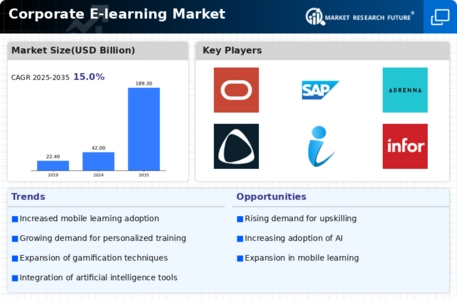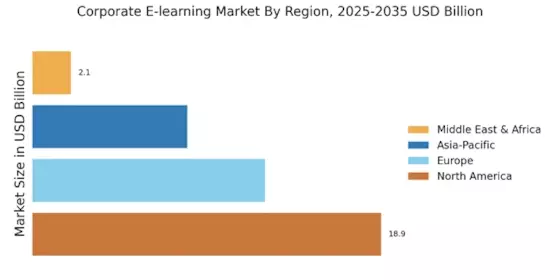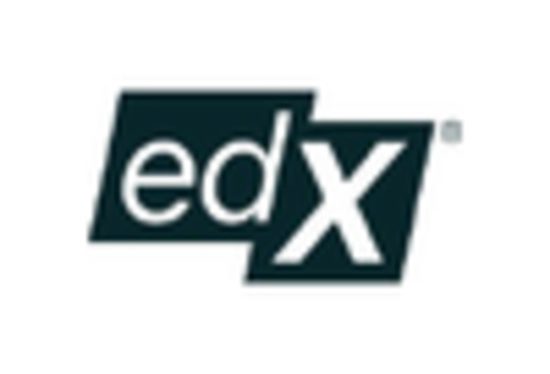Rise of Personalized Learning Experiences
The rise of personalized learning experiences is a significant trend within the Corporate E-learning Market. Organizations are increasingly recognizing that tailored training programs can lead to improved learning outcomes. By leveraging data analytics and learner feedback, companies can create customized learning paths that address the specific needs and preferences of individual employees. Research suggests that personalized learning can enhance engagement and retention rates by as much as 30%. This trend indicates a shift away from one-size-fits-all training approaches towards more individualized solutions. Consequently, the Corporate E-learning Market is evolving to incorporate advanced technologies that facilitate personalized learning, thereby enhancing the overall effectiveness of training initiatives.
Integration of Learning Management Systems
The integration of Learning Management Systems (LMS) is a pivotal driver in the Corporate E-learning Market. Organizations are increasingly adopting LMS to streamline their training processes and enhance the learning experience. These systems provide a centralized platform for managing training content, tracking employee progress, and assessing performance. Recent statistics indicate that the LMS market is expected to grow by over 20% in the coming years, reflecting the rising demand for efficient training solutions. By leveraging LMS, companies can ensure that their training programs are not only effective but also scalable. This integration is likely to play a crucial role in shaping the future of the Corporate E-learning Market, as organizations seek to optimize their training efforts.
Focus on Compliance and Regulatory Training
The Corporate E-learning Market is increasingly focusing on compliance and regulatory training. As businesses operate in an environment characterized by stringent regulations, the need for effective training programs that ensure compliance has become paramount. Organizations are investing in e-learning solutions that provide employees with the necessary knowledge to adhere to industry standards and regulations. Data indicates that companies that prioritize compliance training can reduce the risk of legal issues by up to 50%. This focus on compliance not only protects organizations but also fosters a culture of accountability among employees. As a result, the Corporate E-learning Market is likely to see a rise in the development of specialized training modules aimed at meeting compliance requirements.
Growing Demand for Remote Training Solutions
The Corporate E-learning Market experiences a notable surge in demand for remote training solutions. Organizations increasingly recognize the necessity of providing training that is accessible from various locations. This shift is driven by the need for flexibility and the ability to cater to a diverse workforce. According to recent data, the market for remote training solutions is projected to grow at a compound annual growth rate of approximately 15% over the next five years. This trend indicates that companies are investing in e-learning platforms that facilitate remote access to training materials, thereby enhancing employee engagement and productivity. As a result, the Corporate E-learning Market is likely to witness a significant transformation, with organizations prioritizing the development of comprehensive online training programs.
Emphasis on Continuous Learning and Development
In the Corporate E-learning Market, there is an increasing emphasis on continuous learning and development. Organizations are beginning to understand that ongoing training is essential for maintaining a competitive edge. This realization has led to the implementation of e-learning solutions that support lifelong learning initiatives. Data suggests that companies that invest in continuous learning see a 24% increase in employee retention rates. This trend highlights the importance of creating a culture of learning within organizations, where employees are encouraged to enhance their skills and knowledge. Consequently, the Corporate E-learning Market is evolving to meet these demands, offering a variety of courses and training modules that cater to the diverse needs of the workforce.


















Leave a Comment